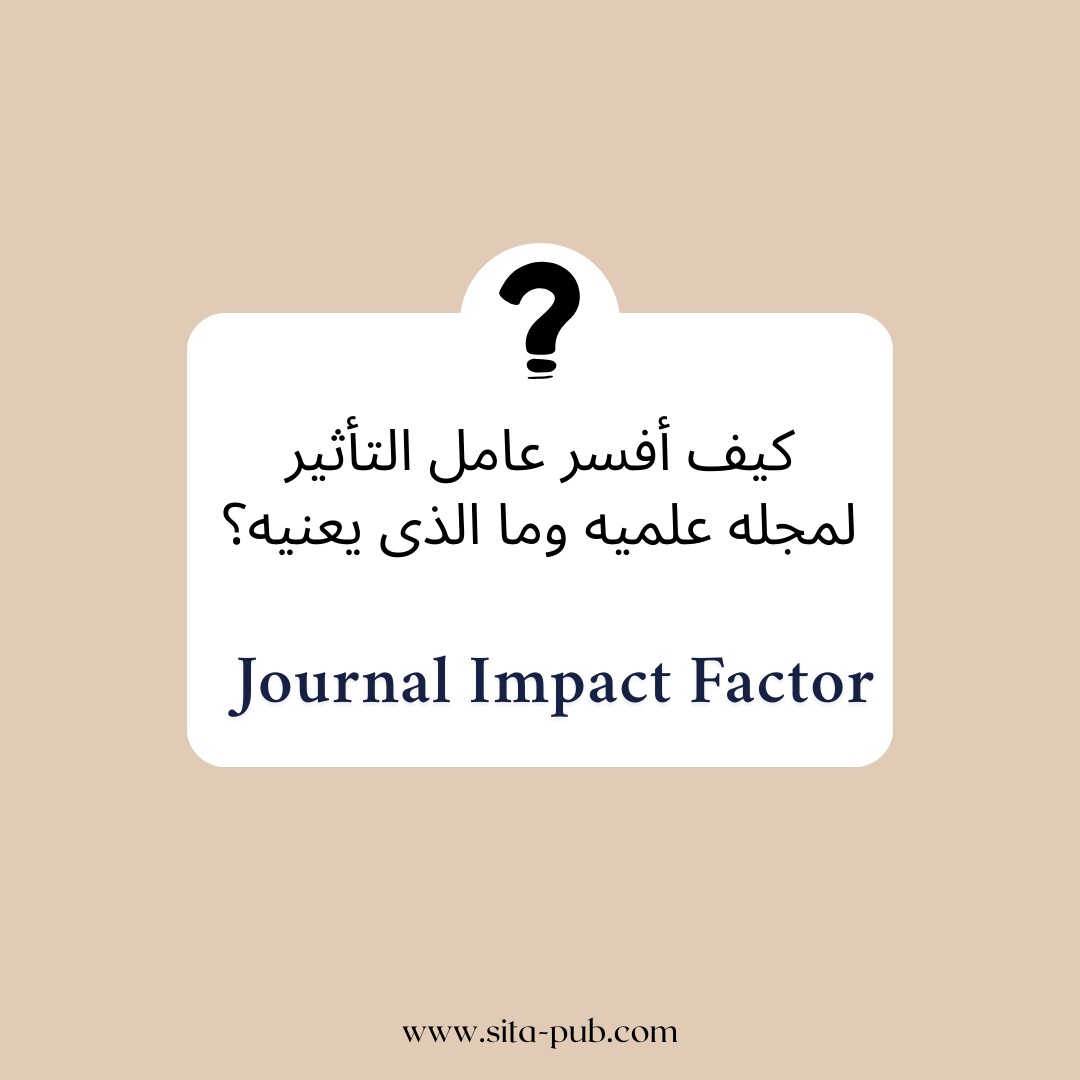کیف أفسر عامل التأثیر لمجله علمیه وما الذی یعنیه؟


عامل التأثیر للمجله (JIF) هو مقیاس شائع الاستخدام فی المجتمع الأکادیمی لتقییم تأثیر ومکانه المجلات العلمیه. یُحسب سنویًا بواسطه شرکه Clarivate Analytics، حیث یقیس متوسط عدد الاقتباسات التی تتلقاها المقالات المنشوره فی مجله معینه خلال سنتین.
یعبر عن عامل التأثیر بقیمه عددیه، مثلاً 3.5، مما یعنی أن المقالات المنشوره فی تلک المجله خلال السنتین الماضیتین تم اقتباسها بمعدل 3.5 مره فی المتوسط. عمومًا، یشیر عامل التأثیر الأعلى إلى أن المجله أکثر تأثیرًا وذات مکانه مرموقه فی مجالها الأکادیمی.
یجب مراعاه السیاق عند تقییم عامل التأثیر للمجله. یمکن أن تختلف عوامل التأثیر بشکل کبیر بین التخصصات الأکادیمیه المختلفه، حیث أن الأبحاث فی العلوم غالبًا ما تحصل على اقتباسات أکثر من الأبحاث فی العلوم الإنسانیه أو العلوم الاجتماعیه. لذلک، من الضروری مقارنه عامل التأثیر ضمن المجال الموضوعی الذی تمثله المجله.

المقیاس | الشرح |
|---|---|
تصنیف الربع (Quartile Ranking) | تُصنف المجلات ضمن فئاتها الموضوعیه وتقسم إلى أرباع (Q1, Q2, Q3, Q4) بناءً على عامل التأثیر. مجله Q1 تقع ضمن أفضل 25% من المجلات فی مجالها. |
الرتبه المئویه (Percentile Rank) | تشیر إلى نسبه المجلات فی نفس الفئه الموضوعیه التی لدیها عامل تأثیر أقل. مجله فی الرتبه 90 تعنی أنها ضمن أفضل 10% من مجلات مجالها. |
المعاییر الخاصه بالتخصص | لکل تخصص أکادیمی معاییره وتوقعاته الخاصه بعوامل التأثیر. ما یعتبر عامل تأثیر مرتفعًا فی مجال ما قد یکون منخفضًا فی مجال آخر. |
بینما یُستخدم عامل التأثیر على نطاق واسع، من الضروری إدراک ما یلی:
یمکن أن یتأثر عامل التأثیر لمجله معینه بعدد قلیل من المقالات التی حصلت على اقتباسات مرتفعه جدًا، مما قد لا یعکس بدقه الجوده العامه للمحتوى المنشور فی المجله.
لا یأخذ عامل التأثیر فی الحسبان الفروقات فی أنماط الاقتباس بین الحقول والتخصصات البحثیه المختلفه، مما قد یؤدی إلى انحیازات فی التقییم.
الفتره الزمنیه التی یعتمد علیها حساب عامل التأثیر (سنتان) قد لا تکون کافیه لقیاس الأثر طویل المدى لبعض المنشورات العلمیه.
تشجیع المؤلفین على الاقتباس من مقالات أخرى ضمن نفس المجله قد یُستخدم کوسیله للتلاعب فی رفع عامل التأثیر بشکل غیر موضوعی.
إذا کنت ترغب فی نشر مقالک ولا تعرف من أین تبدأ، یمکن لفریق سیتا مساعدتک فی کل خطوه من خطوات عملیه النشر. یضم الفریق محترفین ذوی خبره یمکنهم مساعدتک فی:
ما هی الخدمات التی نقدمها؟
إذا کان لدیک أی أسئله، استفسارات، أو ترغب فی معرفه المزید عن خدماتنا، فلا تتردد فی التواصل معنا. فریقنا المخصص مستعد لمساعدتک.